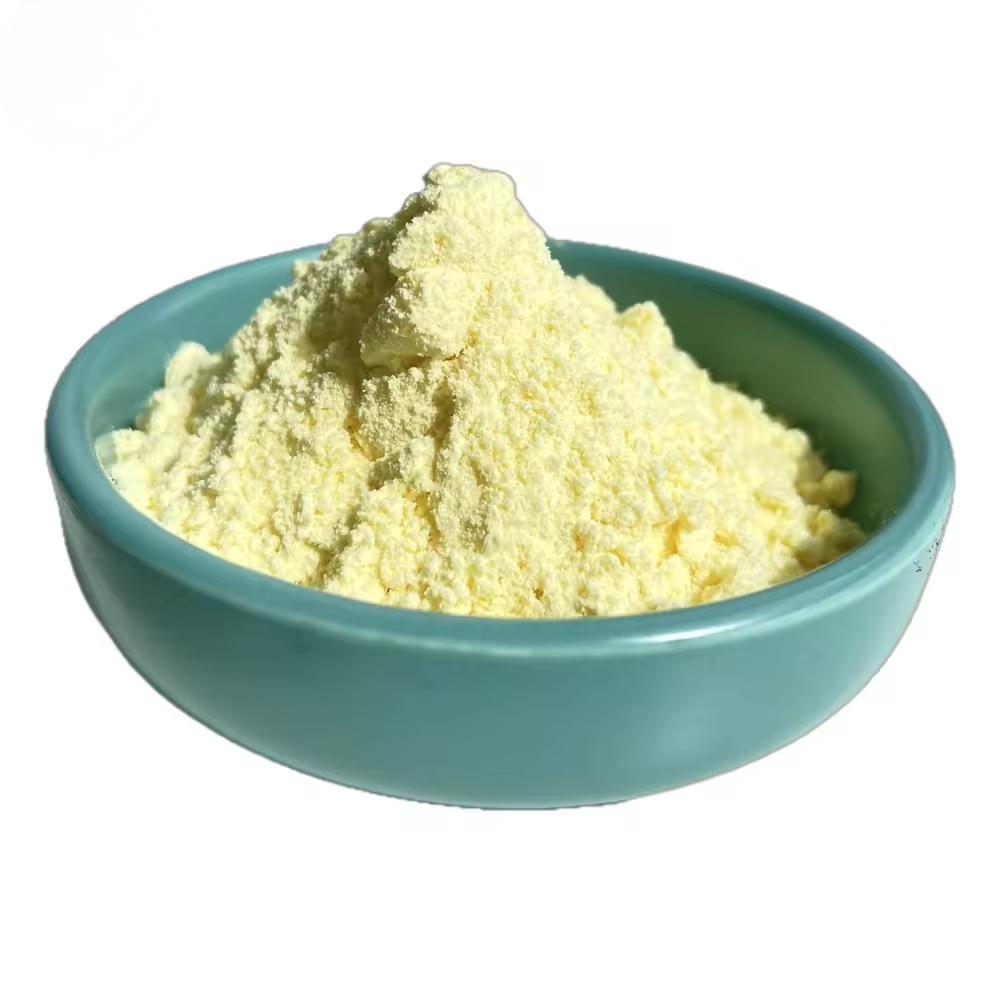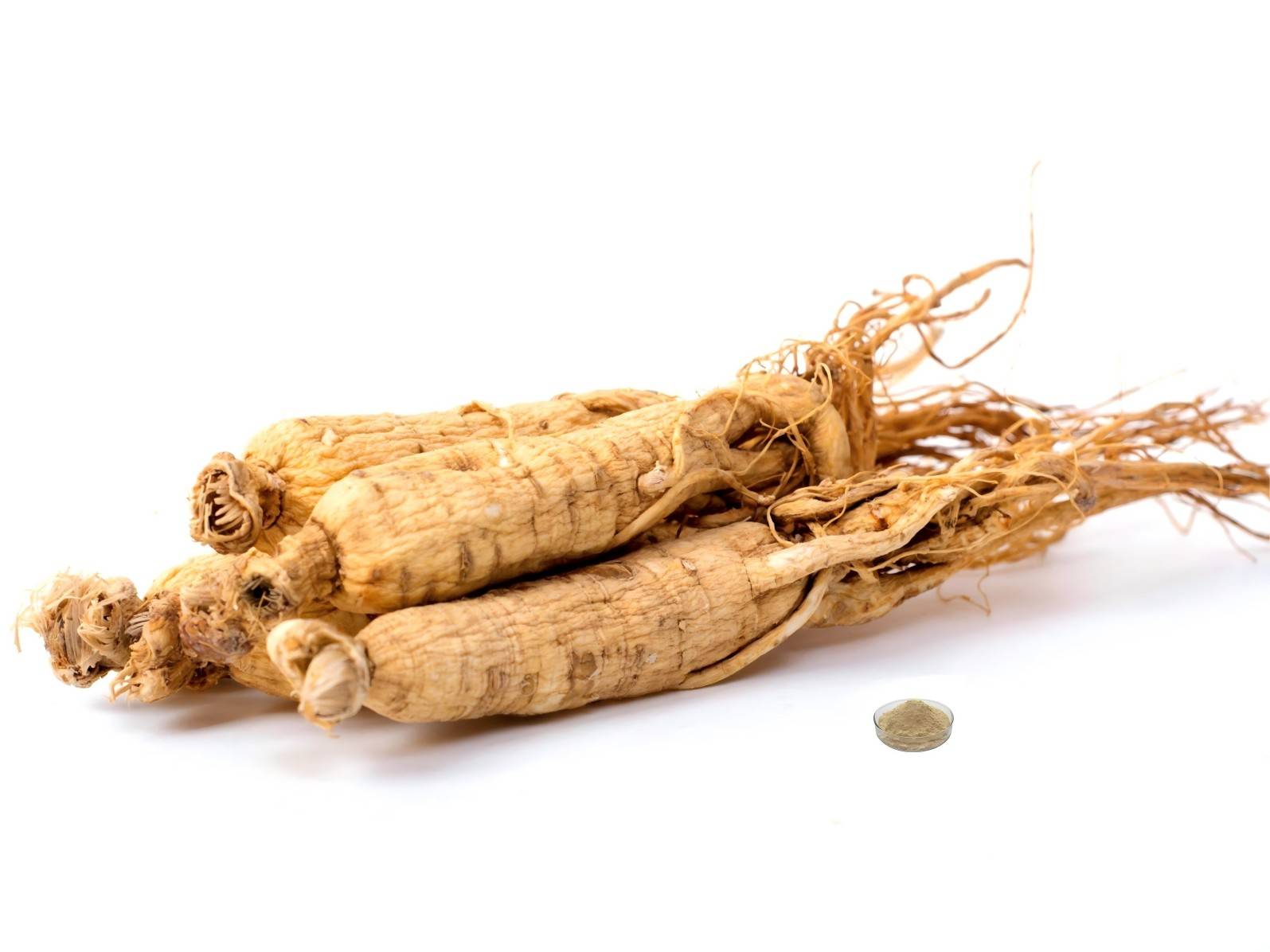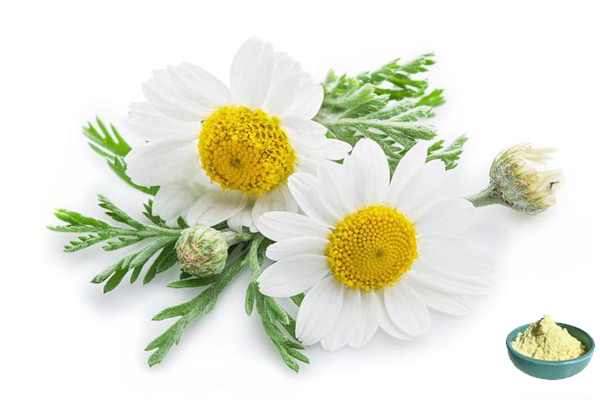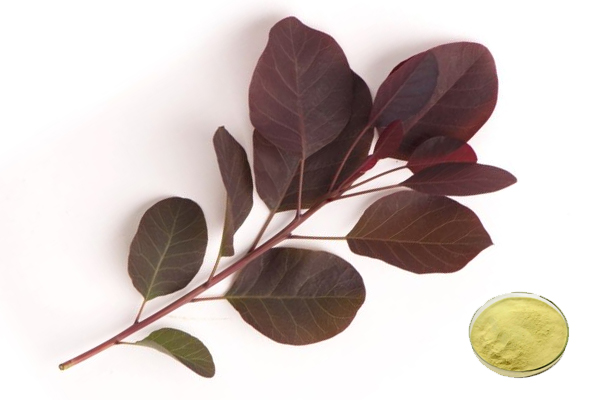Apigenin粉98%
学名:matricaria chamomilla l。
出典花
规格:98%
Testing Method: HPLC
演:光黄色パウダーを
残留農薬:(ec) no 396/2005規格に準拠
- 記述
- データシート
- 証明書
-
アピゲニンパウダー98%とは何ですか?
アピゲニン(apigenin)は、パセリ、セロリ、タマネギ、カモミール、タイム、オレガノ、バジル、紅茶、ビール、ワイン、グレープフルーツ、オレンジなどの様々な植物に広く見られるフラボノイドである。特徴的な15炭素原子のフラボノイド骨格を持ち、複数の環構造、ケトン基、複数の水酸基を持ち、豊富な電子特性と多様な結合親和性を持つ。
国内外の研究で、抗腫瘍、抗酸化、抗炎症、低血糖など多様な生物活性が確認されている。天然の活性物質として幅広い用途が期待されており、食品、栄養補助食品、医薬品などの分野での開発が期待されています。
Apigenin Powder is a light yellow fine powder extracted from celery or chamomile by the supercritical CO2 method. The supercritical CO2 extraction temperature is low (about 35℃), which can effectively protect the heat-sensitive components of apigenin from destruction. The whole process does not require organic solvents and does not produce substances harmful to the human body and environment. High extraction efficiency, low energy consumption, safe and stable extraction process, and non-toxic, colorless, and tasteless.
グリーンスプリング技術は、カモミールの花から抽出された高純度、安定性、低水分、長期保存が可能なアピゲニンパウダー98%を提供しています。eu ec396、eu 2023/915規格、および最高の溶剤残渣規格に準拠しています。
green spring technology社は、植物抽出物の分野で24年の経験を持つ中国有数の植物抽出物技術会社です。7つの認証と7つの特許を取得しています。すべての製品について完璧なトレーサビリティシステムを確立しています。グリーンスプリングはhalal、kosher、cosmos、brc、ifs、fda、isoなど多くの認証を取得しています。権威あるサードパーティのテストレポートが利用可能です。
规格:
商品名
Apigenin
ラテン語名
Matricaria chamomilla Lを有する。
ソース
花
仕様
98%
Testing Method
HPLC
外観
光黄色パウダーを
残留農薬
(ec) no 396/2005規格に準拠しています
法が定め
euの規制に準拠しています。
見積もりをお探しですか?Benefits:
Helps with Sleep
Studies have shown that apigenin has a positive effect on sleep. In animal models, apigenin reduces motor activity and increases sedation, which may contribute to shorter sleep latency and improved sleep quality. Additionally, apigenin can promote sleep by reducing the stress response and increasing levels of BDNF (Brain Derived Neurotrophic Factor) and serotonin.
Anti-Aging
Apigenin exerts its anti-aging effects through a variety of mechanisms. In animal models, apigenin extends the lifespan of fruit flies and nematodes, and in mice, it improves learning memory, reduces tumour proliferation and prolongs survival. The anti-aging mechanisms of apigenin may include reduction of oxidative stress, modulation of immune responses, protection of neurovascular coupling, enhancement of mitochondrial function, and improvement of metabolic health.
Anti-tumour
Studies have shown that apigenin activates transcription factor 3 thereby inhibiting Id1 expression and reducing the proliferation and tumourigenesis of ovarian cancer A2780 cells. Epithelial mesenchymal transition (EMT) is a very important mechanism for initiating and promoting tumour metastasis. Apigenin was found to inhibit metastasis, invasion, and colony formation of non-small cell lung cancer cells with different states of epidermal growth factor receptor by suppressing Snail/Slug-mediated epithelial mesenchymal transition.
Lowering Blood Sugar
Studies have shown that apigenin repairs cellular damage induced by streptozotocin (STZ) in pancreatic β-cells, prevents lipid peroxidation and protein carbonylation, reduces cellular DNA damage, and significantly reduces reactive oxygen species (ROS) production in rat insulinoma cell lines. Apigenin and naringenin effectively restored high glucose-reduced Bcl-2 expression and Akt phosphorylation and protected endothelial cells from damage by inhibiting phosphorylated expression of protein kinase CβII (PKCβII) and downstream reactive oxygen species (ROS) production in high glucose-exposed endothelial cells. In conclusion, apigenin and naringenin may ameliorate endothelial dysfunction by modulating ROS/caspase-3 and NO pathways.
Antioxidant
Numerous scientific studies have revealed the good antioxidant activity of apigenin. One study found the ameliorative effect of apigenin as a natural antioxidant on MTX (methotrexate) hepatotoxicity. Liver antioxidant indexes were significantly elevated in the apigenin pretreatment group, whereas serum AST, ALT, and ALP levels were markedly reduced, and hepatic MDA (Malondialdehyde), TNF-α (Tumour Necrosis Factor α), NO, and IL-1β (Interleukin 1β) levels were significantly reduced. In addition, the hepatoprotective effect of apigenin was confirmed by histological evaluation of the liver, and apigenin could prevent MTX-induced hepatotoxicity by reducing oxidative stress and inflammation.
Vasodilator
After removing the vascular endothelium, it was found that apigenin still had a vasodilatory effect but it was weakened, suggesting that its target point of action included vascular endothelial cells in addition to vascular smooth muscle cells. Preliminary mechanistic studies showed that the vasoconstrictive effect of apigenin against phenylephrine was not only related to the impediment of Ca2+ influx through the modulation of Ca2+ channels but also to the release of NO and the increase in cGMP levels. cGMP levels.
Applications:
In Cosmetics:
Apigenin's absorption of ultraviolet rays is concentrated in the B region (wavelength between 280~320nm), which is strong absorption and can be used in sunscreen series cosmetics. In the A area (wavelength between 320~400nm) the absorption is small, so the low concentration of apigenin can be used as a skin tanning agent to join the use of tanning oil. Apigenin powder can be used in creams; it can be compounded with vitamin B1, vitamin B6, vitamin B12, vitamin C, etc.; it can also be compounded with essential oils such as chamomile oil, calendula oil, and almond oil. High concentrations of apigenin can inhibit melanin cell activity, can be added to sunscreen, cream, essence, lotion, mask, and other cosmetics; and can be used in shampoo, and conditioner.
Apigenin has a strong absorption capacity for UVB ultraviolet rays can protect against radiation damage, and can be used in sunscreen cosmetics. Apigenin has strong antioxidant properties and a strong capturing ability for various oxygen-containing free radicals, which can prevent oxidative degradation of oils and fats. Apigenin also has anti-inflammatory activity, preventing skin problems such as blister evidence, keratosis pilaris, and hyperkeratosis. In addition, apigenin relieves itchy scalp and can be used in hair care products. Therefore, apigenin powder is increasingly used in various kinds of efficacious cosmetics.
-
ダウンロード
アピゲニンパウダー98% coa


 英語
英語 フランス
フランス スペイン
スペイン ロシア
ロシア 韓国
韓国 日本
日本













